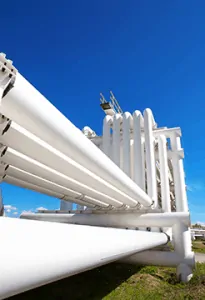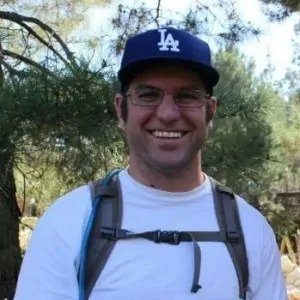

By keeping open lines of communication between industry stakeholders and the U.S. EPA at a federal level, both parties have been able to improve the quality of GHG emissions data reported under the GHGRP while reducing the monitoring burden.
Read this SCS Engineer’s abstract that discusses the cooperation between the U.S. Environmental Protection Agency (EPA) and solid waste industry stakeholders in developing, revising, and implementing the landfill reporting requirements as part of the federal GHG Reporting Program (GHGRP) (40 CFR Part 98). The paper covers:
EPA is proposing a GHG SER of 75,000 tons per year (tpy) Carbon Dioxide equivalent (CO2e) and requesting comment on it as well as two lower levels, specifically 30,000 tpy and 45,000 tpy CO2e, respectively.
The Associations do not believe there is sufficient information to support lowering the GHG SER below the proposed 75,000 tpy CO2e level and provided a table utilizing equivalent criteria pollutants from combustion sources (i.e., NOx, CO) yields CO2 emissions as high as 780,000 tpy CO2.
EPA already concluded in USEPA, Proposed PSD Revisions Rule, 81 FR 68137 that the burdens of regulation at a GHG SER level between 30,000 and 75,000 tpy CO2e would yield a gain of trivial or no value from both a programmatic and individual project-level perspective. Therefore, NWRA and SWANA strongly recommend EPA retain proposed GHG SER of 75,000 CO2e (or higher), and resist pressure to lower the GHG SER.
On the Topic of Biogenic GHG Emissions, the EPA’s final rule requires clarification to remain consistent with previous documentation and research to prevent significant permitting delays and increased costs that will not result in meaningful emission reductions.
The Associations encourage the EPA to ensure that waste-derived biogenic CO2 (e.g., from municipal solid waste (MSW) landfills) is treated as carbon neutral under the final PSD Permitting Revisions Rule to be consistent with prior Agency determinations specified in this memorandum and documents as follows:S. EPA, Memorandum Addressing Biogenic Carbon Dioxide Emissions from Stationary Sources, McCabe, Janet, November 19, 2014.
S. EPA, Memorandum Addressing Biogenic Carbon Dioxide Emissions from Stationary Sources, McCabe, Janet, November 19, 2014. The documents highlight waste-derived, biogenic CO2 as a type of “carbon neutral” feedstock based on the conclusions supported by a variety of technical studies and conclusions of the Agency’s latest draft Framework for Assessing Biogenic Carbon Dioxide for Stationary Sources, which was released with the memo. The Agency memo stated that “the Agency expects to recognize the biogenic CO2 emissions and climate policy benefits of such feedstocks in [the] implementation of the CPP.”
US EPA, Emission Guidelines for EGUs, 80 FR 64855. Both the revised Framework, and the EPA’s Scientific Advisory Board (SAB) peer review of the 2011 Draft Framework, found “that the use of biomass feedstocks derived from the decomposition of biogenic waste in landfills, compost facilities, or anaerobic digesters did not constitute a net contribution of biogenic CO2 emissions to the atmosphere.”
S. EPA, Appendix N. of Revised Framework for Assessing biogenic Carbon Dioxide for Stationary Sources, November 2014, pg. N-25. In Appendix N. of the Framework, entitled Emissions from Waste-Derived Biogenic Feedstocks, EPA calculated negative Biogenic Accounting Factors (BAF) for various examples of treatment of landfill gas via collection and combustion. EPA explains, “Negative BAF values indicate that combustion of collected landfill gas feedstock by a stationary source results in a net CO2e emissions reduction relative to releasing collected gas without treatment.”
US EPA, Carbon Pollution Emission Guidelines for Existing Stationary Sources: Electric Generating Units; Final Rule [Emission Guidelines for EGUs], 80 FR 64885. “[T]he use of some biomass-derived fuels can play a role in controlling increases of [in] CO2 levels in the atmosph The use of some kinds of biomass has the potential to offer a wide range of environmental benefits, including carbon benefits.”
US EPA, Emission Guidelines for EGUs, 80 FR 94855. Types of waste-derived biogenic feedstocks may include: landfill gas generated through decomposition of MSW [municipal solid waste] in a landfill; biogas generated from the decomposition of livestock waste, biogenic MSW, and/or other food waste in an anaerobic digester; biogas generated through the treatment of waste water, due to the anaerobic decomposition of biological materials; livestock waste; and the biogenic fraction of MSW at waste-to-energy facilities.
NWRA and SWANA believe the final PSD Revisions document should follow the approach to waste-derived feedstocks enshrined in the Final Clean Power Plan, and as recommended by the SAB, and ensure that waste-derived biogenic CO2 is treated as carbon neutral. Based on EPA’s own lifecycle assessments for the Renewable Fuels Standard program, its U.S. GHG Inventory, and confirmed by the SAB, EPA has sufficient analysis to support exclusion of selected categories of biogenic emissions from PSD permitting, including those from managing landfill gas and organic components of MSW.
The EPA does not seem to consider the regulatory treatment of biogenic CO2 from stationary sources to be a key issue in the context of the PSD revisions rule, based on a comment found in a Summary of Interagency Working Comments on Draft Language. Instead, the EPA continues to believe this rulemaking to establish a GHG SER under the PSD program is not the appropriate venue to address the broader concern of the regulatory treatment of biogenic CO2 from stationary sources.
The Associations strongly disagree and are concerned that because EPA remains silent on this important issue, some permitting authorities might improperly require landfills to incorporate biogenic CO2 emissions in the PSD permitting process. Historically, few landfills triggered PSD because non-methane organics emissions rarely reached the threshold. However, if biogenic CO2 emissions become subject to PSD, many landfill projects, which are “anyway sources” due to renewable energy projects, would also be forced to do BACT analysis for GHG. Biogenic CO2 is emitted from:
From the perspective of developing new renewable transportation fuel or energy projects, subjecting biogenic emissions from landfills to PSD could be an enormous barrier. The Associations would like the EPA to clarify in its final rule that the emissions of biogenic CO2 from treating or controlling landfill gas does not increase the CO2 levels in the atmosphere, but instead, has positive emission reduction and climate benefits. Failing to clarify this important point could subject landfills to significant permitting delays and increased costs that will result in no meaningful emission reductions.
Questions? Contact SWANA, NWRA, Patrick Sullivan, or your local SCS office.

Long story short, an escapee from San Quentin and any uncontrolled methane air molecule may be more similar than we may presume. In fact, a common LDAR practice is to use an infrared imaging camera; similar to the camera often used in search of fugitive criminals.
On a serious note, fugitive emissions are something that both industry and regulators have been focused on for decades, and the past and present efforts made to limit them are no less than remarkable.
Specific to Onshore Oil and Gas Exploration & Production, the Federal Regulations applicable to fugitive emissions are fairly young. Finalized in 2012, NSPS OOOO is no longer a toddler and is in the middle of growing into NSPS OOOOa (Public Comment Deadline March 11, 2016). On a national scale, NSPS OOOOa will expand fugitive emission monitoring and control requirements (VOC’s and methane) to several facility types associated with the industry and is expected to be finalized before the close of 2016.
In California, fugitive emissions from Onshore Oil and Gas Exploration & Production have been regulated for a long time. In fact, the O&G industry in Santa Barbara County has dealt with fugitive emission requirements since 1979. Since then SCS Engineers has been assisting with fugitive emission monitoring for our valued clients. Today, SCS Engineers provides the Oil and Gas Exploration and Production industry with efficient and effective LDAR services.
So fear not, SCS Engineers is ready to supply the knowledge and skill set you need to stay compliant, maintain your operations, and respect your bottom line. Remember, unless the doors are closed, pumps are turned off, and equipment is flushed and plugged; fugitive emissions requirements and LDAR will likely still apply.
Applicability: Determining Federal vs. State oversight is the first step. Non-Major Source Oil and Gas Production facilities are either subject to NSPS OOOO (soon to be OOOOa) or a related State specific rule (i.e. Colorado Regulation 7). Once oversight is determined, then there may still be exemptions for your facility (i.e. facility constructed before August 23, 2011). And finally, once regulatory oversight is confirmed and you determine that LDAR is required for your facility, then the last step is to figure out which equipment is applicable (i.e. VOC content > 10% by weight). Basically, an applicability determination can be daunting.
Equipment: EPA’s Method 21 is historically and currently referenced in all LDAR regulations. Method 21 requires an instrument such as the Flame Ionization Detector (FID) or Photo Ionization Detector (PID). More recently the Optical Gas Imaging (OGI) Camera has been included in LDAR regulations and utilized in LDAR programs. Presently, there are several instrument technologies that exist and are in the works, but not yet mainstream in Oil and Gas sector. Ultimately, if you were to find yourself conducting LDAR monitoring at your oil and gas facility tomorrow per an established regulation, you would most likely need to use an FID or OGI.
Recordkeeping: Personally, I like the simplicity of using paper forms for field notes; however, the old-fashioned way comes with risk. The up-front and ongoing data involved with an LDAR program is too much for maintaining a paper to computer process, regardless of how organized you think you are. Therefore, a computer database platform is recommended and necessary for managing your LDAR recordkeeping. Beyond just recordkeeping, a database platform can organize schedules, alerts, generate reports, extract trends, and many other applications to help keep your LDAR program compliant. One such platform worth considering is SCSeTools™. This cloud-based software can provide the database capabilities used on the desktop, but almost more importantly, provides mobile data input capabilities with the SCS MobileTools™ application fit for Android and IOS systems. Keep the fugitives from escaping, and document containment for the authorities!

Whether you want to discuss LDAR or Dodger baseball, don’t hesitate to contact me, or SCS Engineers.
Resources:
Learn more on the SCS service pages and read SCS project case studies from across the nation to help fine tune your program.
Outside links to the EPA proposed rulemaking website: